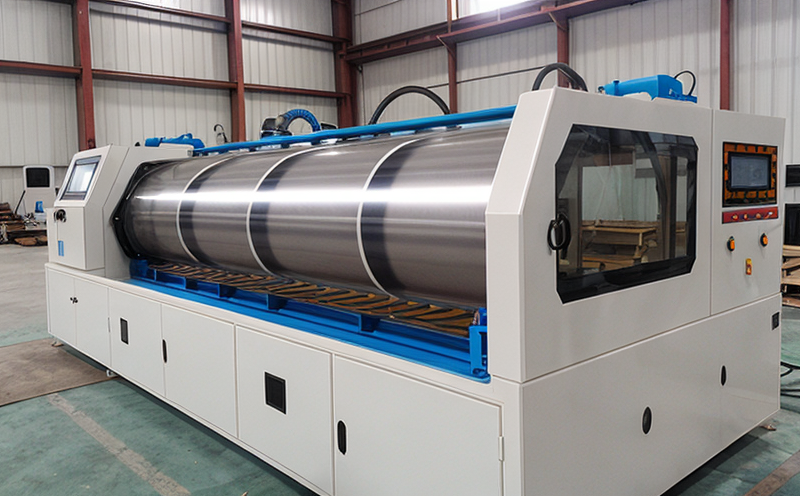ASTM D5734 Tearing strength of laminated fabrics Wing rip method
The ASTM D5734 standard provides a comprehensive protocol to determine the tearing strength of fabrics that have been coated, laminated, or otherwise finished. This testing procedure is particularly useful for assessing the durability and integrity of materials used in sectors such as automotive, aerospace, construction, and textiles where high-stress environments are common.
The Wing Rip method evaluates the maximum force required to tear a specimen along a predetermined path, which simulates real-world stressors that may occur during usage. This test is crucial for ensuring product reliability and safety, especially in applications like seat covers, roof linings, and other components where structural integrity is paramount.
The ASTM D5734 standard specifies the dimensions of the specimens to be used, the method of applying force, and the criteria for acceptable results. Specimens are typically cut from larger sheets of fabric, ensuring uniformity across all test samples. The Wing Rip apparatus consists of a fixture that holds the specimen in place while a specified force is applied until tearing occurs.
During testing, the direction of application must be carefully controlled to ensure accurate measurement of the tearing strength. The results are reported in units of force per unit width of the fabric, providing valuable insights into the material's performance under stress. This information is essential for quality control and design optimization processes within manufacturing facilities.
Understanding the ASTM D5734 testing procedure helps manufacturers to identify potential weaknesses in their products early on, allowing for necessary adjustments before production begins. By incorporating this test into their quality assurance protocols, companies can enhance customer satisfaction and ensure compliance with industry standards.
The Wing Rip method is just one of many tests available under the ASTM D5734 standard. It complements other mechanical property evaluations, such as tensile strength and elongation at break, providing a more complete picture of a fabric's performance characteristics.
In summary, ASTM D5734 offers a robust framework for assessing the tearing strength of laminated fabrics through the Wing Rip method. Its application ensures that products meet stringent quality requirements, thereby enhancing their longevity and reliability in demanding environments.
Benefits
The implementation of ASTM D5734 provides several key advantages to manufacturers and quality control departments:
- Enhanced Product Reliability: By identifying potential weaknesses early in the development process, companies can improve product durability and reduce the risk of failures.
- Compliance Assurance: Ensuring adherence to international standards helps businesses meet regulatory requirements and gain market access.
- Cost Efficiency: Early detection of issues through rigorous testing can prevent costly recalls and warranty claims.
- Innovation Support: The insights gained from ASTM D5734 can inspire new product designs that better withstand real-world conditions.
- Consistency in Quality: Standardized testing methods like ASTM D5734 help maintain consistent quality across batches and production runs.
- Customer Confidence: Demonstrating commitment to high-quality standards can build trust with customers, fostering long-term relationships.
Industry Applications
The ASTM D5734 Wing Rip method finds extensive application across various industries where the durability and integrity of laminated fabrics are critical:
- Aerospace Industry: Ensuring that materials used in aircraft interiors, such as seat covers and roof linings, can withstand extreme conditions.
- Automotive Sector: Evaluating the strength of components like door panels, headliners, and other interior trim pieces to enhance safety and comfort.
- BUILDING AND CONSTRUCTION: Assessing the durability of roof membranes, insulation materials, and other building envelope products.
- Sports Equipment: Testing the integrity of padding in sports gear like football helmets, hockey gloves, and protective clothing.
- Military Applications: Evaluating the performance of materials used in military vehicles and equipment to ensure they can withstand harsh environments.
In each of these sectors, the ASTM D5734 method plays a vital role in ensuring that products not only meet but exceed industry expectations for strength and reliability.
Quality and Reliability Assurance
The ASTM D5734 Wing Rip test is an integral part of quality assurance programs designed to ensure consistent product performance. By incorporating this method into their testing protocols, manufacturers can achieve several important goals:
- Consistent Quality: The standardized approach ensures that every specimen tested provides comparable results.
- Error Detection: Early identification of potential issues allows for corrective actions to be implemented promptly.
- Data Integrity: Robust test procedures lead to reliable data, which is essential for making informed decisions during product development and manufacturing.
- Regulatory Compliance: Adherence to international standards like ASTM D5734 helps companies meet regulatory requirements and avoid costly penalties.
- Customer Satisfaction: Demonstrating a commitment to high-quality products can significantly enhance customer satisfaction and loyalty.
By leveraging the insights gained from ASTM D5734 testing, manufacturers can continuously improve their processes, ultimately leading to higher-quality products that meet or exceed industry expectations. This commitment to excellence is crucial for maintaining a competitive edge in today's global market.





